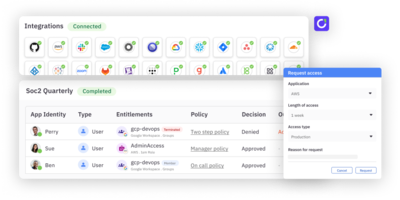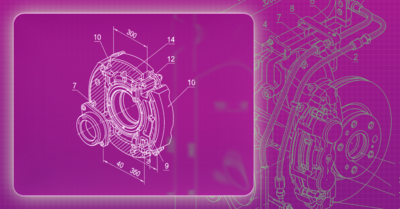Identity lifecycle management (ILM) is a foundational part of any identity program. It governs who has access to what, when, and why. When implemented correctly, ILM reduces risk, eliminates human error, and ensures access stays tightly aligned to user roles and business needs. It’s essential for operational efficiency, security, and compliance.
Identity lifecycle management overview
ILM is the comprehensive process for creating, managing, and revoking the digital identity and access rights for all user identities from their start date to their end date. This includes:
- Creating new identities for new users (employees, contractors, guests) and granting them appropriate access to resources
- Updating existing identities as roles and responsibilities change, ensuring users have the correct access privileges.
- Monitoring access levels to prevent security risks and ensure compliance with policies.
- Offboarding users by revoking access and deprovisioning identities when they leave the organization.
Essentially, ILM is about ensuring the right people have the right access to the right resources at the right time.
The critical role of security in identity lifecycle management
ILM is more than just a proficiency tool or process. It’s a foundational pillar of your cybersecurity strategy. Robust identity security ensures that only the right users have access to the right resources at the right time, nothing more, nothing less. By continuously verifying access and eliminating unnecessary or outdated permissions, it shrinks your attack surface, reduces insider risk, helps you meet compliance standards, and helps prevent data breaches caused by compromised or mismanaged accounts.
An effective ILM strategy directly prevents breaches by eliminating some of the most common security risks:
- Orphaned accounts: Instantly deprovisioning access for leavers removes dormant user accounts that attackers target to gain unauthorized access.
- Privilege creep: Automatically adjusting permissions during role changes prevents users from accumulating unnecessary, high-risk entitlements, enforcing the principle of least privilege.
In a zero trust model, access is never assumed. It must be earned and revalidated continuously. ILM supports this by dynamically adjusting access based on real-time user status, ensuring that trust is granted only when it’s justified and revoked the moment it’s not.
The core phases of identity lifecycle management
ILM operates across three critical phases: joiner, mover, and leaver (often referred to as JML). Each stage represents a pivotal point in a user’s relationship with an organization and each is an opportunity to improve security, reduce risk, and streamline operations.
- Joiner (Onboarding): When a new employee joins, ILM automates the provisioning of accounts, group memberships, and access permissions based on their role. Rather than waiting days for IT to manually grant access, new hires receive the tools they need on day one (email, Slack, Salesforce, GitHub, etc.) pre-configured according to policy. This automation not only accelerates productivity but also ensures that access is granted precisely and consistently, aligned to least privilege principles.
- Mover (Role & access changes): As employees change roles or departments, their access needs evolve. When a promotion or team change is detected, ILM workflows revoke outdated permissions and provision new ones based on the user’s updated role. This prevents “privilege creep,” the accumulation of unused or unnecessary access, and avoids productivity gaps that happen when someone can’t access the tools they need in a new position.
- Leaver (Offboarding): Offboarding is the most critical phase from a security standpoint. As soon as an employee’s status changes in the HR system, ILM initiates automated deprovisioning workflows that revoke access across all connected systems. This eliminates the risk of orphaned accounts, unused but still active logins that attackers often target, and ensures that no sensitive data or systems remain accessible to former employees. Manual offboarding processes often leave dangerous gaps; ILM closes them in real time.
Breaking down the identity lifecycle management process
There are several mechanisms that drive effective identity lifecycle management across the joiner-mover-leaver (JML) lifecycle to ensure identities are properly created, maintained, and governed over time. Here’s how the identity lifecycle management process works:
Identity creation
Before a user can access any system, their digital identity must be established. This step typically includes:
- Collecting core data: Name, employee ID, department, role, and other attributes from the HR system.
- Establishing baseline access: Determining what applications and systems are needed from day one, aligned to least privilege.
- Setting up authentication: Creating login credentials and enforcing secure methods like multi-factor authentication (MFA) or biometrics.
This process is most efficient when automated through an integrated HR and identity system, minimizing manual work and reducing error.
Onboarding and provisioning
This phase bridges identity creation with active participation in company systems. It’s about getting the right access in place automatically and securely.
With modern ILM tools:
- The moment a user is added to an HR platform (like Workday or BambooHR), that identity syncs to an identity provider (like Okta or Entra ID).
- Role-based access control (RBAC) policies drive automatic provisioning to groups with predefined access, ensuring consistency and enforcing least privilege.
Without automation:
- HR and IT must manually coordinate to assign permissions.
- The process is prone to overprovisioning (too much access) or underprovisioning (not enough access), impacting security and productivity.
- IT teams are left creating accounts and assigning entitlements by hand, which doesn’t scale.
Email creation is another key onboarding task—critical for identity, communication, and tool access. It should follow organizational standards and be generated automatically as part of the provisioning workflow.
Monitoring, reporting, and maintenance
Once identities are active, continuous oversight is required to keep access secure and aligned with policy. This ongoing phase of ILM involves:
Access monitoring
- Track who has access to which systems and why.
- Detect anomalies or unauthorized access attempts.
- Prevent privilege creep by identifying unused or excessive permissions.
Reporting
- Generate audit-ready access reports.
- Prove compliance with internal controls and regulatory standards.
- Uncover patterns or risky access trends.
Access maintenance
- Update permissions as users change roles, teams, or responsibilities.
- Modify user attributes (e.g., title, department) to reflect current status.
- Manage group memberships to align access with real-time needs.
- Regularly clean up unused permissions to prevent privilege sprawl.
Organizations can streamline this entire process using a centralized identity governance and administration (IGA) platform. A well-implemented IGA system consolidates identity visibility, approval workflows, and audit trails giving security teams the control they need to enforce policies at scale.
Implementing an effective ILM strategy: A step-by-step guide
Rolling out a successful identity lifecycle management program doesn’t happen all at once. It requires a structured, phased approach that aligns with your organization’s systems, people, and policies. Here’s how to get started:
Discover and define
Start by taking inventory of your environment. Identify all critical systems, applications, infrastructure, and data repositories. Map out the types of users in your organization (employees, contractors, vendors, service accounts) and define who needs access to what—and why. This step helps uncover redundant or risky entitlements and sets the foundation for effective governance.
Establish a “source of truth”
Your HR system should serve as the authoritative source for identity information. When someone joins, changes roles, or leaves, the HR system should trigger the appropriate provisioning or deprovisioning workflows. Aligning identity creation to HR ensures consistency and accuracy across all downstream systems.
Develop policies & roles
Work with business stakeholders to define access needs for each department or role. Implement role-based access control (RBAC) to standardize and simplify how access is granted. For higher-risk systems or sensitive data, supplement RBAC with fine-grained entitlements or attribute-based access controls (ABAC).
Automate workflows
Manual provisioning and approvals can’t keep up with the pace of modern work. Use ILM tools to build automated workflows for access requests, approvals, provisioning, and reviews. Integrate with collaboration tools like Slack or Microsoft Teams to meet users where they already work and improve adoption.
Pilot and roll out
Don’t try to tackle the entire organization at once. Choose a single department, system, or application as your pilot group. Test your provisioning flows, review cycles, and policies in a low-risk environment. Use what you learn to refine your workflows before scaling ILM across the company.
Monitor and optimize
Once ILM is live, keep tuning it. Use built-in reporting and analytics to track user behavior, review decisions, and access trends. Look for gaps, inefficiencies, or signs of privilege creep. Continuously improve policies, streamline workflows, and strengthen your overall security posture with real-time insights.
Common identity lifecycle management challenges (& how to solve them)
Even with the right strategy in place, identity lifecycle management can be difficult to implement at scale. Here are some of the most common ILM challenges and actionable solutions to help you overcome them:
- Challenge: Manual processes can’t keep up with cloud speed. In cloud environments, relying on manual IT tickets is too slow. This leads to productivity delays for new hires and leaves critical security gaps open when employees leave.
- Solution: Automate the entire lifecycle. By integrating your HR system with an ILM platform, you can ensure access is granted and revoked in real-time, eliminating human error and delay.
- Challenge: Lack of visibility across a hybrid environment. With hundreds of SaaS apps and multiple cloud providers, it’s nearly impossible to manually answer the simple question: “Who has access to what?” This lack of visibility makes it easy to miss risky permissions or orphaned accounts.
- Solution: Deploy an IGA solution that connects to all your systems—cloud and on-premises—to create a single, unified view of all entitlements. This provides the visibility needed to govern access effectively.
- Challenge: Securing non-human identities at scale. The number of service accounts and API keys is exploding. These privileged accounts often use static, long-lived credentials and lack clear ownership, making them a prime target for attackers.
- Solution: Implement specialized privileged access management (PAM) and secrets management tools. These solutions can discover, vault, and automatically rotate credentials for non-human identities, enforcing least privilege and minimizing risk.
- Challenge: Getting business manager buy-in for security tasks. Managers are busy and often see security tasks like access reviews as a burden. This can lead to rubber-stamping approvals, which undermines the entire governance process.
- Solution: Provide a better user experience. Use tools that integrate into their existing workflows (e.g., performing approvals in Slack). Frame ILM as a tool that empowers them with self-service options and makes their team more productive and secure.
Identity lifecycle management for non-human entities: a critical overview
Managing non-human identities is fundamentally different and significantly more complex than managing human ones. Service accounts, API keys, and machine identities do not have managers, they do not change roles, and their lifecycle is tied to the code or infrastructure that created them rather than to a person. These identities are often created by developers, operate behind the scenes, and may never be reviewed unless something goes wrong.
The lifecycle of a non-human identity includes three stages:
Creation: Often initiated through scripts, automation tools, or infrastructure-as-code, non-human identities are provisioned with credentials such as API keys, tokens, or certificates. These are typically associated with a specific purpose or function within an environment.
Rotation: To reduce risk, credentials should be rotated on a regular schedule. However, many organizations continue to rely on static, long-lived secrets that remain unchanged for extended periods, increasing the potential for compromise.
Decommissioning: When an application is retired or a service is no longer in use, the associated identities must be revoked and removed. Without automation, these accounts are often forgotten and left active, creating unnecessary security exposure.
Because these identities are both numerous and decentralized, they require specialized tools that can automatically discover, vault, and rotate credentials. Manual tracking is not scalable. Security teams need clear visibility into which non-human identities exist, what they have access to, and whether their credentials are properly secured and current.
Managing identities in cloud-based environments
Unlike traditional on-prem systems, the cloud introduces entitlement sprawl—a rapid expansion of access rights and roles across multiple platforms like AWS, GCP, and Microsoft Azure. These permissions are often deeply nested, decentralized, and inconsistent between providers, making it difficult to gain a clear picture of who has access to what.
ILM for cloud-based environments should include deep visibility into cloud infrastructure entitlements, enforce least privilege across dynamic environments, and still integrate with legacy systems like Active Directory and LDAP to maintain a unified identity strategy.
This is where cloud infrastructure entitlement management (CIEM) comes in. CIEM is a specialized discipline within identity governance and administration (IGA) that focuses specifically on managing, monitoring, and right-sizing cloud infrastructure permissions. As cloud environments grow in scale and complexity, CIEM has become essential for extending ILM practices into modern, multi-cloud infrastructures.
Identity lifecycle management best practices for modern security & compliance
To strengthen your security posture and maintain compliance, follow these proven identity lifecycle management best practices:
- Automate end-to-end lifecycle workflows: Automating ILM tasks such as onboarding, access changes, and deprovisioning helps ensure the right access is granted and removed in real time. This eliminates delays, minimizes human error, and reduces operational overhead.
- Use your HR system as the source of truth: When your identity system is integrated with HR platforms like Workday or BambooHR, updates to an employee’s role or status are automatically reflected across access permissions. This maintains alignment between the workforce and access policies.
- Enforce least privilege through RBAC and policy-driven access: Assign access rights based on predefined roles and policies to streamline access governance and ensure users only have the access required to perform their duties. Review and adjust policies as roles and responsibilities evolve.
- Conduct regular, automated access reviews: Automating access certifications helps prevent privilege creep and ensures entitlements are always appropriate. Tools that integrate reviews into familiar workflows (e.g., Slack) improve completion rates and reduce rubber-stamping.
- Maintain a full audit trail of access events: Every access request, approval, modification, and removal should be logged in a centralized system. This provides evidence for compliance audits and supports forensic investigations when needed.
Essential identity lifecycle management tools & platforms
Modern identity lifecycle management (ILM) requires more than just provisioning and deprovisioning users. To be effective, your ILM solution should include:
- A broad catalog of integrations: It must connect to SaaS apps, cloud infrastructure, and on-premises systems to unify identity management.
- No-code, customizable workflows: Approval and provisioning processes should be easy to automate and adjust without engineering help.
- An intuitive, self-service experience: Users should be able to request and manage access directly from tools they already use, like Slack or the command line.
- Powerful reporting and analytics: For visibility into access activity, compliance readiness, and governance performance.
- Support for modern authentication: Integration with Single Sign-On (SSO), Multi-Factor Authentication (MFA), and other security layers is essential.
Below are the top ILM platforms and what they offer:
ConductorOne
ConductorOne is a modern governance platform designed to help organizations secure their workforce identities through automated access controls and governance.
ConductorOne centralizes identity management across cloud and on-premises systems, providing a single source of truth for user access and permissions.
The platform emphasizes user experience and automation, making it easier for both IT and security teams to manage access, streamline compliance, and reduce the risk of identity-related breaches.
What sets conductorOne apart?
ConductorOne reimagines identity lifecycle management by combining ease of use with proactive security. Unlike traditional, complex IGA solutions, ConductorOne prioritizes a user-friendly experience with self-service features and an intuitive interface. This empowers employees and reduces the burden on IT.
ConductorOne leverages AI and automation to go beyond basic compliance, actively identifying and mitigating security risks. Designed for fast time to value and flexible extensibility, ConductorOne is a truly modern solution for managing identities.
Microsoft Entra Lifecycle Management
Part of Microsoft’s identity ecosystem, Entra offers lifecycle automation, entitlement management, and compliance tooling. Best suited for Microsoft-heavy environments, though it can be complex to configure and manage without dedicated IT support.
Okta Lifecycle Management
A widely adopted IAM platform that supports provisioning, deprovisioning, and adaptive MFA. Okta’s Universal Directory and large app ecosystem simplify management across cloud services, but some users report frustration with the interface and setup complexity.
SailPoint Lifecycle Management
SailPoint provides a robust IGA platform with strong automation. Features like access modeling and predictive identity analysis can be powerful, but the interface and configuration can be challenging for new users.
CyberArk Lifecycle Management
Best known for privileged access management, CyberArk secures high-risk identities like service accounts and admin credentials. It includes tools for secrets management, credential rotation, and session monitoring, though initial setup often requires professional services.
Auth0 User Management
Auth0 focuses on developer-friendly identity management, especially for customer-facing applications. It offers role-based authorization and customizable login experiences, but users have flagged documentation and support quality.
Microsoft Azure Active Directory
Azure AD is the backbone of Microsoft identity services, offering SSO, MFA, and conditional access. It integrates well within Microsoft ecosystems and supports hybrid environments, but users often note performance issues and interface confusion.
Ping Identity PingOne for Workforce
PingOne is designed for enterprise workforce access, offering SSO, passwordless login, and strong federation support. It excels in authentication options but has a steep learning curve and complex integrations for some environments.
Oracle Identity and Access Management
Oracle’s suite includes tools for lifecycle automation, access certification, and policy enforcement. While feature-rich, it’s known for complex deployments and brittle upgrades that often require significant effort to manage.
Symantec (now part of Broadcom)
Symantec offers identity governance and privileged access controls. Key features include access certifications and strong authentication, but users report outdated interfaces and poor platform usability following the Broadcom acquisition.
ForgeRock Identity Platform
ForgeRock delivers a flexible, modular IAM platform with support for modern protocols and complex enterprise environments. It offers strong directory and access management capabilities, though reporting and pricing may be limiting factors.
JumpCloud Identity Lifecycle Management
JumpCloud is a cloud-native directory platform focused on SMBs and mid-market companies. It combines device management, provisioning, and SSO in one place, though advanced governance features like recertification are more limited.
OneLogin Identity Lifecycle Management
OneLogin provides simple, cloud-based IAM with automation for user provisioning and access controls. While easy to use, some advanced features require premium tiers, and users have cited outdated documentation and a confusing interface.
Automate and secure your identity lifecycle with ConductorOne
Legacy identity systems weren’t built for the speed and complexity of today’s cloud-first world. They’re slow, manual, and create security and compliance gaps that put your organization at risk. ConductorOne was built to solve these problems from the ground up. It’s not just another IGA tool—it’s a modern identity governance platform designed to automate and secure the entire identity lifecycle across cloud and SaaS environments.
ConductorOne replaces outdated workflows with intelligent automation for provisioning, deprovisioning, access reviews, and policy enforcement. By eliminating manual processes, the platform reduces operational overhead, closes critical security gaps, and makes identity governance fast, accurate, and scalable.
Customers choose ConductorOne because it delivers immediate, measurable results:
- Improved security through least privilege enforcement, just-in-time access, and automated deprovisioning.
- Stronger compliance with full audit trails and flexible workflows to meet certification needs.
- Higher efficiency with access reviews completed 85% faster and provisioning that scales with your business.
- Better user experience that simplifies tasks for end users, reviewers, and IT teams alike.
Whether you’re looking to reduce risk, meet compliance goals, or simplify complex identity environments, ConductorOne gives you the tools to move fast and stay secure.
See how ConductorOne can transform your identity lifecycle. Book a demo today.




